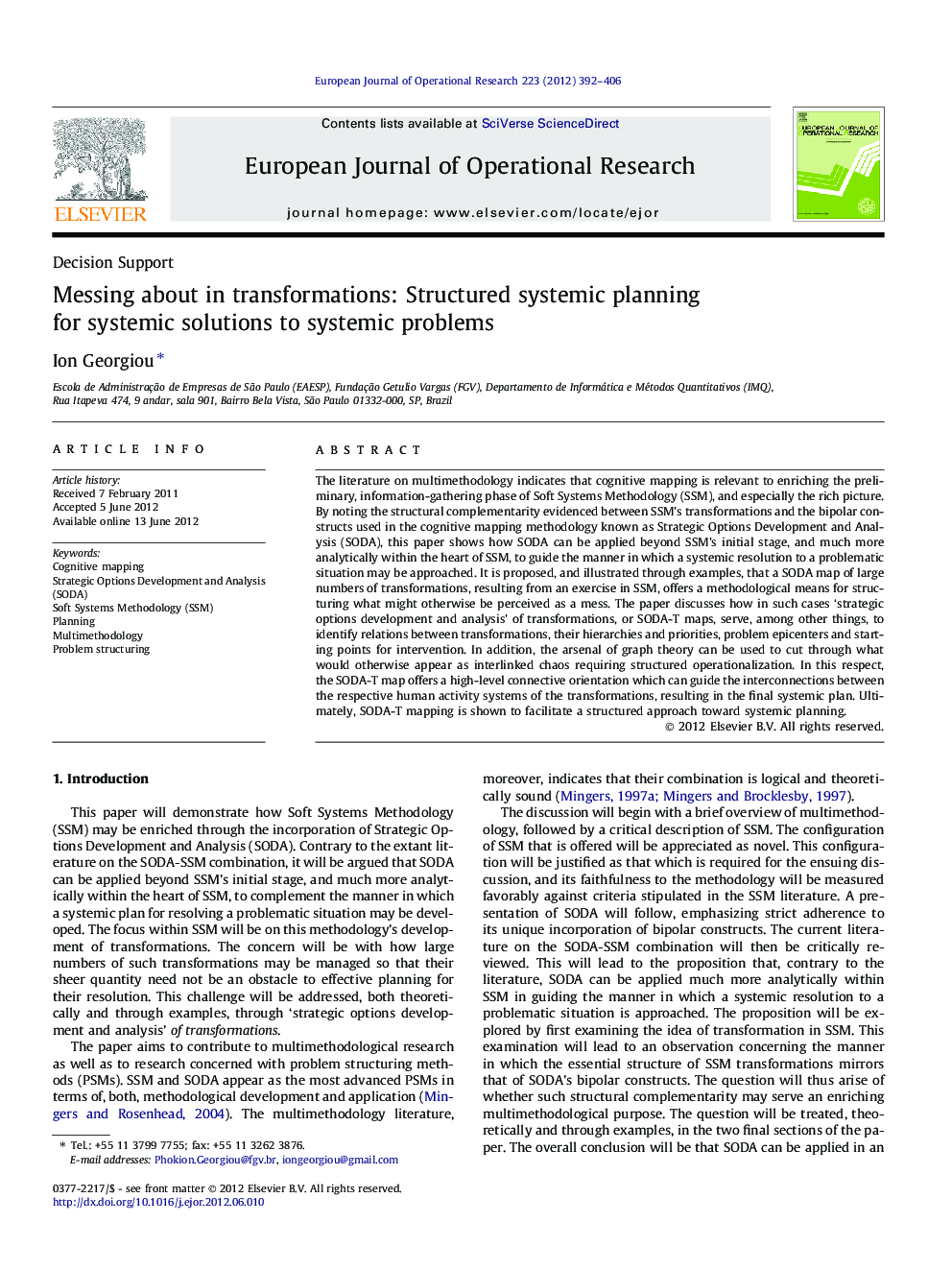| Article ID | Journal | Published Year | Pages | File Type |
|---|---|---|---|---|
| 480246 | European Journal of Operational Research | 2012 | 15 Pages |
The literature on multimethodology indicates that cognitive mapping is relevant to enriching the preliminary, information-gathering phase of Soft Systems Methodology (SSM), and especially the rich picture. By noting the structural complementarity evidenced between SSM’s transformations and the bipolar constructs used in the cognitive mapping methodology known as Strategic Options Development and Analysis (SODA), this paper shows how SODA can be applied beyond SSM’s initial stage, and much more analytically within the heart of SSM, to guide the manner in which a systemic resolution to a problematic situation may be approached. It is proposed, and illustrated through examples, that a SODA map of large numbers of transformations, resulting from an exercise in SSM, offers a methodological means for structuring what might otherwise be perceived as a mess. The paper discusses how in such cases ‘strategic options development and analysis’ of transformations, or SODA-T maps, serve, among other things, to identify relations between transformations, their hierarchies and priorities, problem epicenters and starting points for intervention. In addition, the arsenal of graph theory can be used to cut through what would otherwise appear as interlinked chaos requiring structured operationalization. In this respect, the SODA-T map offers a high-level connective orientation which can guide the interconnections between the respective human activity systems of the transformations, resulting in the final systemic plan. Ultimately, SODA-T mapping is shown to facilitate a structured approach toward systemic planning.
► Offers critical reviews of SODA and SSM. ► Shows how SODA mapping can enrich SSM beyond this methodology’s initial stage. ► Shows how a SODA-inspired approach can be applied much more analytically within SSM. ► Proposes the use of a new tool, SODA-T maps, which allow for ‘strategic options development and analysis’ of transformations.
